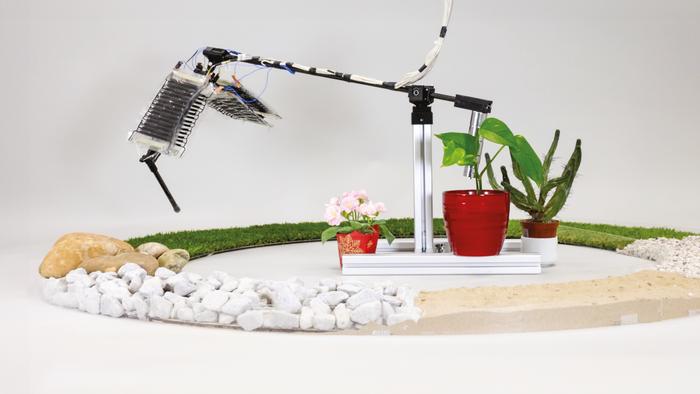As in humans and animals, an extensor and a flexor muscle ensure that the robotic leg can move in both directions. These electro-hydraulic actuators are attached to the skeleton by tendons. The actuators are oil-filled plastic bags, similar to those used to make ice cubes. About half of each bag is coated on either side with a black electrode made of a conductive material. When voltage is applied to the electrodes, they are attracted to each other due to static electricity. As voltage increases, the the electrodes come closer and push the oil in the bag to one side, making the bag overall shorter.
Pairs of these actuators attached to a skeleton result in the same paired muscle movements as in living creatures: as one muscle shortens, its counterpart lengthens.

Credit: Thomas Buchner / ETH Zurich and Toshihiko Fukushima / Max Planck Institute for Intelligent Systems
This increased utility doesn't come at a great energy cost, it uses less than a robotic leg powered by an electric motor, primarily due to less heat.
The robotic leg’s ability to jump is based on its ability to lift its own weight explosively while the artificial muscle adapts to suitable position through the interaction with the environment. This is driven just by two input signals: one to bend the joint and one to extend it. The same principle applies to the robotic leg’s musculoskeletal system: upon landing, the leg joint adaptively moves into a suitable angle depending on whether the surface is hard or soft.





Comments